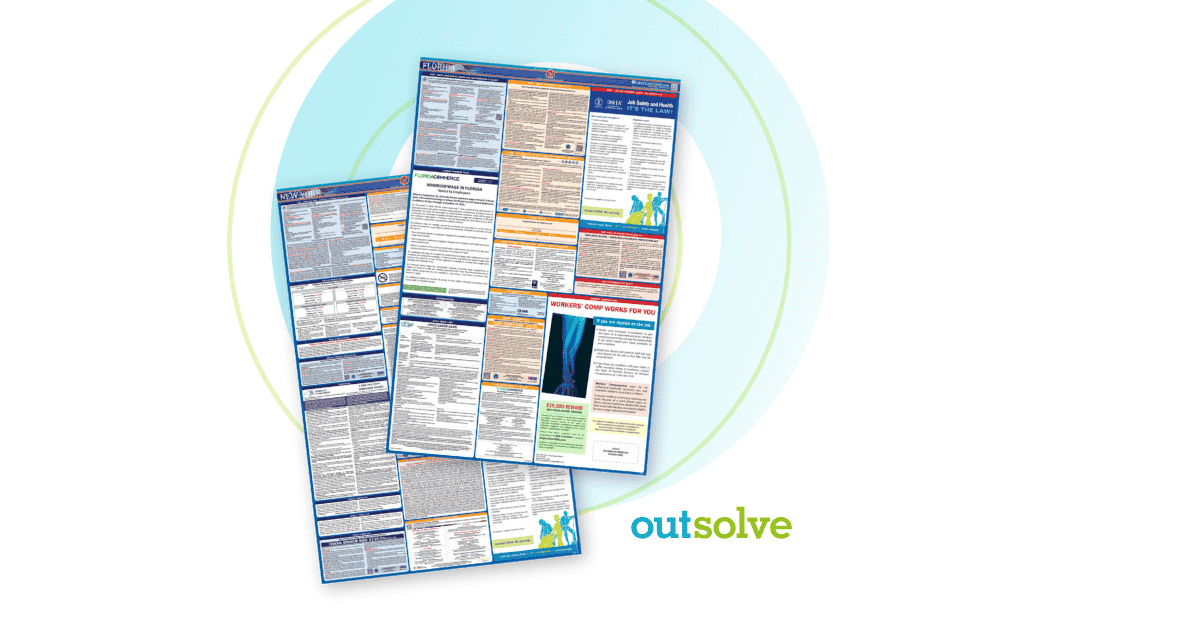8 min read
Navigating Pay Transparency Laws: A Comprehensive Guide for Employers
 Neil Dickinson
:
Jun 24, 2024 10:45:00 AM
Neil Dickinson
:
Jun 24, 2024 10:45:00 AM

Pay transparency laws continue to gain traction in the United States as a measure to address the persistent gender pay gap and promote fair compensation. By shedding light on compensation practices, pay transparency empowers employees to make informed career decisions and encourages employers to conduct fair and equitable pay practices. Many employers are also adopting the principles of pay transparency for strategic reasons, as a way to strengthen and differentiate their talent practices.
Let’s delve into the history of the pay transparency movement, explore the benefits of pay transparency for both employers and employees, and walk through a strategic approach for organizations to embrace pay transparency successfully.
The Pay Transparency Movement: A Brief History
For decades, the gender pay gap has been a persistent issue in the United States, with women earning on average only 82% of what men earn for the same work. This disparity has fueled the rise of the pay transparency movement, which gained significant momentum in the late 2010s as part of the broader #MeToo and #TimesUp movements. Pay transparency emerged as a popular tool to address the gender pay gap and promote equal pay for equal work.
In 2018, Colorado became the first state to enact a groundbreaking pay transparency law, requiring employers to provide salary ranges for all job postings. This marked a pivotal milestone in pay equity progression, inspiring several other states and cities to follow suit and enact their own pay transparency laws. Notably, New York City, California, and Washington state have implemented comprehensive pay transparency legislation, mandating employers to disclose salary ranges and prohibiting retaliation against employees who inquire about compensation.
The momentum of the pay transparency movement has also reached the federal level. Several bills have been introduced in Congress that aim to require employers nationwide to disclose salary ranges for all job postings. These proposed laws, such as the Paycheck Fairness Act and the Salary History Ban Act, seek to create a more transparent and equitable job market by empowering individuals with information about compensation.
As the pay transparency movement continues to build momentum, it is reshaping the landscape of workplace compensation. By shedding light on compensation practices and fostering open conversations about pay, pay transparency is driving positive change towards fair and equitable compensation for all.
Want to learn how to achieve Pay Equity from the start?
Examples of Pay Transparency Laws
Here are a few of the most important state-specific pay transparency laws to keep on your radar.
Colorado’s Equal Pay for Equal Work Act
Identified as one of the strictest state pay equity laws to date, Colorado’s Equal Pay for Equal Work Act includes provisions on pay equity, pay history and pay transparency, along with job-posting requirements. The law covers discrimination due to sex (including gender identity) or sex in combination with another protected status. The law states that employers may not pay an employee of one sex less than an employee of another sex for substantially similar work.
Hawaii’s SB 1057
On July 3, 2023, Hawaii Gov. Josh Green signed into law SB 1057, which requires employers to “disclose an hourly rate or salary range that reasonably reflects the actual expected compensation” in job listings. The law expands equal pay discrimination protections by prohibiting employers from discriminating based on “any protected category” identified by state law — not just “sex” — by paying such employees less for “substantially similar work.”
New York State Pay Transparency Laws
New York Gov. Kathy Hochul signed into law Senate Bill S9427 and amended Senate Bill S1326, which requires covered employers in the state to adhere to pay transparency requirements. Private employers with a minimum of four employees (excluding temporary help firms) must include the minimum and maximum annual salary or hourly pay range in any job, promotion, or transfer opportunity advertisement. If applicable, employers must also disclose the job description for the position.
Illinois Equal Pay Act
On August 11, 2023, Gov. J.B. Pritzker of Illinois signed a law that updates the Illinois Equal Pay Act (IEPA). This amendment focuses on pay transparency in job postings. Effective Jan. 1, 2025, the new law requires employers with at least 15 employees to include the pay scale, benefits, and other compensation for a specific job position.
This legislative update applies to jobs performed solely in Illinois and to positions that will be physically performed, at least in part, within the state. It also applies to positions where the employee reports to a supervisor, office or other work site in Illinois, even if the work is performed outside the state.
California Equal Pay Act
Under pay transparency requirements in California, employers must maintain records of job titles and wage rates for each employee throughout their employment and for three years after their employment ends. When posting job openings in California, employers must include the pay scale if the position may be filled in the state, whether in-person or remotely.
The pay scale refers to the expected salary or hourly wage range for a position, and if no range is set, a set hourly amount or piece rate may be provided. Employers can’t meet this requirement by linking to salary information or using QR codes in job postings; the pay scale or flat rate must be directly provided.
Rhode Island Pay Equity Legislation
Signed by Gov. Dan McKee and in effect since Jan. 1, 2023, Rhode Island’s pay equity legislation makes it unlawful to pay an employee less than the employees of another race, color, religion, sex, sexual orientation, gender identity or expression, disability, age, or country of ancestral origin for comparable work. The law also bars employers from inquiring about or relying on salary history to make compensation decisions. It also includes pay transparency protections, and employers may not require a candidate to disclose salary history or rely on salary history on a candidate to defend lower pay.
3 Benefits of Pay Transparency for Employers and Workers
While compliance often triggers the initial conversation around pay transparency, the work doesn’t have to end there. Pay transparency can play a more strategic role in your overall talent strategy, with far-reaching benefits.
When considered in this light, pay transparency can not only serve the interests of employees, but also align with the strategic goals of employers, creating a more dynamic, committed, and satisfied workforce. Pay transparency can create a path for fostering an environment of openness and trust, which can lead to a better candidate experience, a more efficient hiring process and improved employee retention rates.
Deliver a Better Candidate Experience
When candidates have access to comprehensive salary information for a given position, they are better equipped to make informed decisions regarding their pursuit of said opportunity. This results in saved time and resources for both the candidate and the employer. Moreover, candidates feel empowered and are less inclined to engage in interviews for positions that do not meet their financial expectations. By implementing a transparent approach, employers can attract genuinely interested candidates, thereby enhancing their talent pool and ultimately, improving their hiring success.
Consider this example: a job candidate invests considerable time and effort attending multiple interviews across the city, only to discover that the budgeted salary was far below her expectations. This situation could have been easily avoided with upfront pay transparency, saving both the candidate and the employer valuable time and resources. It's a stark reminder of the efficiency and respect inherent in transparent practices.
In one study by SHRM Research, about 70% of organizations that list pay ranges in job advertisements reported that it had led to more people applying for their jobs, and 66% said that it had increased their quality of applicants. Those findings align with a 2022 LinkedIn report revealing that 91% of workers said that including salary ranges in a job post would affect their decision to apply, and 82% of respondents said seeing a salary range would give them a more positive impression of a company.
Streamlined Hiring PRocess
Pay transparency also improves the hiring experience for employers by reducing back-and-forth discussions on compensation. When candidates have a clear understanding of the salary range upfront, there's less need for negotiation and clarification during the hiring process.
Recruiters and hiring managers use the time they save to focus on other critical aspects of the hiring process, such as assessing skills and cultural fit. This efficiency allows employers to make faster hiring decisions and secure top talent before their competitors.
Transparency about pay can save you money: Employers who include pay prominently in their job listings pay less for advertising to reach the same number of qualified candidates, research from job ad platforms has found.
Increase your employee retention rate
Pay transparency can significantly contribute to higher employee retention rates. When employees feel that compensation is handled equitably, they're less likely to feel underpaid or undervalued. Transparent pay practices foster a sense of trust and fairness among employees, reducing the likelihood of turnover due to compensation-related issues.
Internal mobility is another area where pay transparency can have a positive impact. When employees have visibility into market pay ranges, it becomes easier to justify pay adjustments for internal promotions or transfers. This streamlined process encourages employees to pursue growth opportunities within the organization, leading to increased employee satisfaction and retention.
Steps to Adopt Pay Transparency Strategically in Your Organization
Transitioning to a culture of openness around compensation can seem daunting, but with a thoughtful approach, the benefits far outweigh the challenges. Here's how you can adopt pay transparency strategically in your organization.
Audit Your Pay Practices for Compliance
With new pay transparency regulations going into effect in many states, HR leaders must carefully assess their compensation practices. Start with a pay transparency audit, which involves reviewing existing policies, job descriptions, hiring processes, and any systems used to manage compensation.
Key areas to evaluate include how salary ranges are being communicated during recruitment, if at all. If you operate in jurisdictions with pay transparency laws, identify what information is required for public job postings. All gaps need to be identified, such as a lack of formalized salary bands. The audit should also look at compensation philosophy and decision-making to identify potential biases.
Keep in mind that pay transparency doesn't have to be an all-or-nothing approach. Determine what level of transparency aligns with your organizational culture and goals. Whether it's disclosing salary ranges in job postings or sharing the criteria for pay increases, choose a level that you're comfortable with and that meets legal requirements.
Conduct a Benchmark Analysis for Your Industry
A benchmark analysis of market pay rates is crucial for establishing the competitive salary ranges required under pay transparency regulations. The process typically involves researching compensation data sources specific to an organization's industry, location, and workforce size. Sources may include national surveys from compensation consulting firms or user-generated databases.
Relevant jobs at peer companies should be analyzed to understand typical pay ranges. Factors like education, experience levels, responsibilities, and skills should be considered to ensure an apples-to-apples comparison of comparable roles. Gather data not only for base salary but also for total compensation, including bonuses, equity, or other benefits.
Results need to be compiled and adjusted based on the organization's particular compensation philosophy, budget, and performance. The goal is to create formal, defendable salary ranges that align with market pay and can be consistently applied across recruiting, promotions, and annual review processes. Regular benchmarking keeps pay scales competitive and supports fair, transparent compensation decisions.
Update Job Descriptions to Align with New Data
Once market pay rates have been established through benchmarking, job descriptions should be reviewed and updated based on the compensation data. This ensures accurate communication of salary expectations to candidates even before they apply.
Make sure to include a validated salary range for the position level and location. Ranges create more flexibility than single-salary figures. Job duties and requirements should also be examined to ensure they match the benchmarked jobs used for comparison. Doing so ensures that the expected qualifications, skills, and experience align with market pay.
Any outdated or inconsistent job content needs revision at this stage. Descriptions must clearly convey the job's scope and value. Review descriptions with managers to get feedback on changes to maximize accuracy, reader understanding, and buy-in. The goal is to publish revised job postings that offer supportable pay details, set appropriate expectations, and meet transparency regulations.
Train Hiring Managers and Recruiters to Discuss Pay Appropriately
Equip your managers and HR team with the tools and training they need to navigate conversations about pay. Ensuring they understand the organization's compensation philosophy and can articulate it clearly is vital for maintaining consistency and confidence in the process.
Training should explicitly cover when and how to share salary information. Anyone interacting with a candidate must understand how to appropriately discuss compensation accurately and without bias.
Train recruiters to communicate consistently about compensation in all job postings, profiles, and early conversations. Reinforce the importance of staying within approved salary ranges. Integrating salary information across the candidate journey emphasizes transparency, eliminates surprises, and builds trust between candidates and your brand.
Develop Centralized Systems to Manage Compensation Data
To effectively manage pay transparency across multiple locations, consider implementing centralized compensation management systems. These tools automate many tasks related to maintaining consistent and compliant pay practices. Partner with Talent Acquisition to track the factors that are considered when determining starting pay.
For example, these systems can store approved salary ranges and job descriptions in a single database. Up-to-date, uniform information is available no matter where a role sits or where a job description is posted. When this software integrates with applicant tracking systems, you can automatically include pay details in job listings.
These systems give recruiters and hiring managers access to real-time, validated compensation data when making an offer of compensation. Systems provide reporting to track offers made against approved ranges, providing oversight and preventing mistakes or discrepancies. Central systems can simplify auditing practices and other policies that demonstrate ongoing compliance with pay transparency laws.
These tools help multistate employers adopt the strictest transparency standards across all locations. Centralized compensation management gives employers visibility and control over pay decisions, regardless of geography.
Do You Need a Guide for Your Pay Transparency Journey?
While compliance presents challenges, especially for multistate employers, the benefits of transparency far outweigh the costs. With the right strategies and systems in place, HR leaders can comply with pay transparency laws, streamline the hiring process, and improve their employer branding.
OutSolve offers customized solutions to help assess current practices, establish market-based salary ranges, update job descriptions and implement systems to manage transparency consistently. Whether you require support with an initial pay equity audit or ongoing consulting, OutSolve's team of compensation experts can smooth the way for your pay transparency journey.
Neil brings over 20 years of experience working with HR, Talent Acquisition, and Compensation teams across the country to build best-in-class compliance programs. Neil has worked directly with the OFCCP on hundreds of successful AAP Pay Equity Audits, supported clients in EEOC equal pay charges, and has also designed Pay Equity Analytics to provide federal contractors better visibility to pay gaps within their organizations. Neil regularly delivers training on Pay Equity and other compliance topics for SHRM, ILG, and other industry HR group events. Neil received his undergraduate degree from the University of South Carolina and The University of Hull in England and his MBA from The Citadel.
Recent Posts
Related Posts

The Ultimate Guide to Multi-State Labor Law Posters
Human Resources professionals understand how important and challenging it can be to remain updated and compliant with labor laws. This is especially...

Countdown: Final Days of the 90-Day Safe Harbor Period for AAPs
April is here and with that comes the end of the 90-day safe harbor period for federal contractors complying with EO 11246. As April 21, 2025,...

What Triggers an I-9 Audit? Key Factors You Should Know
Verifying proper identity and work authorization documentation for every employee is a crucial HR compliance function - not just for a company’s...



